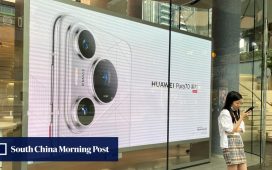SAN FRANCISCO, Jan 6 ― Artificial intelligence (AI) is set to boost the capabilities of camera sensors, starting with those in our smartphones. In addition to recognising certain faces or objects, AI could help optimise their power use and, more surprisingly, allow them to capture what is currently invisible to the naked eye.
According to Business Korea, the South Korean manufacturers Samsung and SK hynix intend to take advantage of advances in artificial intelligence for their future image sensors. By 2027, Samsung even intends to offer the first sensor capable of capturing the invisible. But what might the firm mean by “invisible”?
“Capturing the invisible” seemingly refers to the possibility of capturing in an image certain things that the human eye is not normally able to see. Infrared, ultraviolet and thermal imagery are just some of the techniques that could one day be integrated into a single camera sensor ― maybe even X-ray image capture. While some might already be imagining the possibility of seeing through certain materials, it’s photos taken in dark conditions that are expected to benefit from this technology in the first instance. For the time being, integrating an AI chip into a photo sensor or camera could above all help to improve image quality while optimizing the associated power consumption.
Advertisement
These sensors could also be destined for sectors other than smartphones, such as the automotive and medical industries. Either way, according to Samsung’s roadmap, no concrete applications are expected before 2027.
Far from stopping there, Samsung is reportedly hoping to develop camera sensors with a resolution close to that of the human eye (ie. over 500 Megapixels) for future humanoid robots. The firm’s record today stands at 200 MP on the Galaxy S23 Ultra. ― ETX Studio
Advertisement














